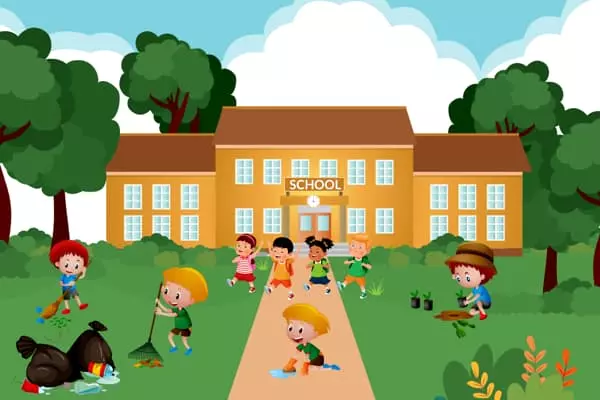Environmental education (EE) connects us to the world around us by teaching us about both natural and built environments. EE raises awareness of issues affecting the environment on which we all rely, as well as actions we can take to improve and sustain it. Whether we bring nature into the classroom, take students outside to learn, or find teachable moments on a nature walk with our families, EE has many benefits for youth, educators, schools, and communities.
Environmental education requires more investment and innovation if future generations are to fully respond to the climate emergency, according to experts. Researchers have warned that unless there is significant support and investment in environmental and science education, the world’s environmental crisis will worsen. Reforms would assist young people in addressing our current situation’s complex, interconnected, and dynamic issues.
According to the experts, governments and other organizations must direct more funding to education innovation in response to scientists’ consistent warnings about trends in the deterioration of ecosystems, biodiversity, and climate, among other environmental issues.
Environmental and science education helps people recognize false information and ideologies, as well as understand and respond appropriately to climate emergency warnings. The research base is unequivocal about the superiority of whole-school approaches to quick curriculum fixes for dealing with issues like the climate emergency.
Alan Reid
The journal’s senior editors, Alan Reid from Monash University, Justin Dillon from the University of Exeter, Jo-Anne Ferreira from the University of Southern Queensland, and Nicole Ardoin from Stanford University, write in Environmental Education Research that environmental education is a “cornerstone for the social and environmental changes” that will be required in the future.
They go on to say that reaching an agreement on our environmental problems isn’t just a matter for scientists. It must be supported by those in the humanities, arts, and social sciences, as well as the general public. Only then will recent calls by organizations such as UNEP and UNESCO for “environmental education to be a core component of all education systems at all levels by 2025” have a chance of gaining the multilateral and multi-leveled support that the situation so desperately requires.

The academics cite international surveys that show many governments continue to under-fund and under-invest in environmental and sustainability education at the pre-school, elementary, secondary, and college levels.
According to Professor Ferreira: “The research base is unequivocal about the superiority of whole-school approaches to quick curriculum fixes for dealing with issues like the climate emergency. The existential risk aspects necessitate an examination of investment and innovation in lifelong learning and non-school based provision, as well as an examination of the current focus of initial teacher education and continuing professional development.”
According to Professor Reid: “The popularity of outdoor education centers and activities reflects a broader interest in the environment and nature, as well as when the arts, media, and civil society address the climate crisis. Flagship environmental and science communication documentaries such as David Attenborough’s investigation into the causes and consequences of the climate emergency whet many people’s appetites for learning more from credible sources. Sir David’s own learning journey in understanding the urgency of the situation highlights the rich learning opportunities available to all of us, particularly in the run-up to COP26 in Glasgow.”
“Ensuring that any form of environmental education is relevant, coherent, fit for purpose, appropriately funded, and available to current and future generations within and beyond the curriculum will be critical to addressing sound and pertinent scientific warnings,” he added.
According to Professor Dillon: “To mitigate the effects of the environmental crisis, global leaders should discuss how to reimagine, recreate, and restore environmental education. Countries should integrate environmental and science education into the fabric of society in ways that make sense on a local level.”
“Only by investing in education, particularly environmental and sustainability education, will it be possible to radically alter the course we are currently on, and thus demonstrate to ourselves and future generations that sufficient heed was paid to our warnings,” Professor Ardoin said.
Once you and your children have decided to work together to save the planet, encourage them to think creatively about ways to reduce waste, pollution, and protect their natural environment. Consider the contents of their lunchbox, the gifts they give to school friends, and household items that can be reused and repurposed. When it comes to living greener, there is always more we can do!













